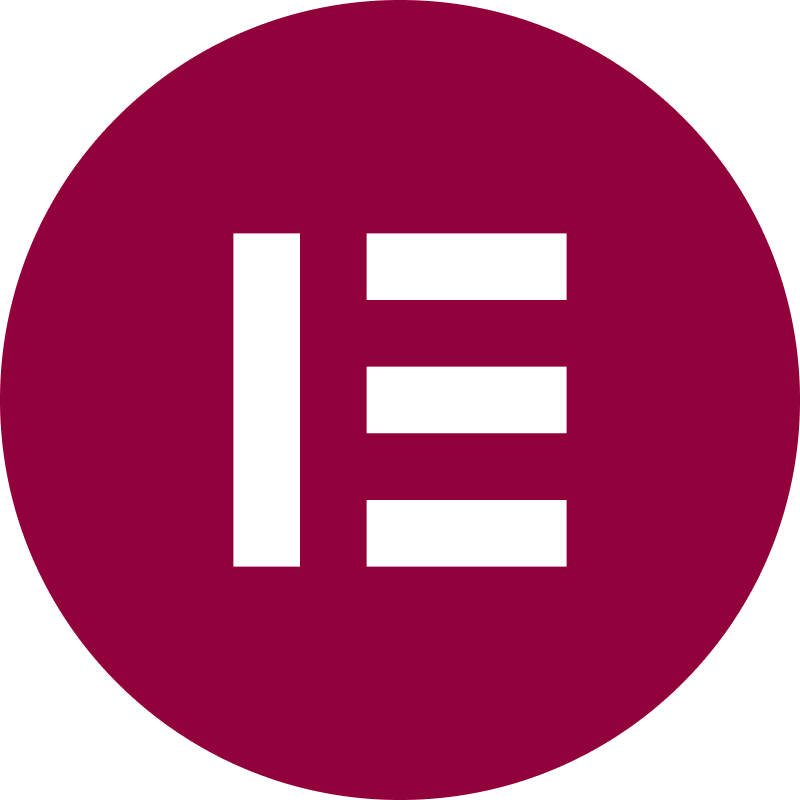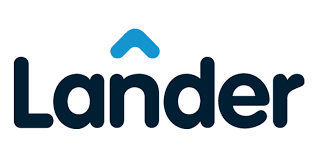In the bustling digital marketplace, your website’s landing page acts as the frontline soldier. It’s the first impression, the initial handshake, and in many cases, the make-or-break point for converting visitors into customers. With stakes this high, choosing the right tool to craft your online welcome mat is crucial. Enter the arena, Elementor and Lander, two heavyweight contenders in the landing page creation space. Each brings unique strengths to the table, but which one is the best fit for your needs? Let’s start peeling the layers with a look at usability and user experience.
| Elementor | Lander |
|---|---|
 |  |
| G2 Score – 4.5 out of 5 stars | G2 Score – 3.0 out of 5 stars |
| TrustRadius Score – 8.9/10 | TrustRadius Score – 3.6/10 |
Usability and User Experience
Elementor: A Designer’s Playground
Elementor has rapidly become a favorite among WordPress enthusiasts, offering a drag-and-drop interface that makes page building feel less like a chore and more like an art session. It’s designed for those who crave control over every pixel without needing to dive into code. Whether you’re a seasoned designer or a business owner with a vision, Elementor provides the tools to bring your ideas to life.
From the get-go, Elementor stands out with its intuitive design interface. The learning curve is gentle, thanks to a well-organized workspace and a vast array of pre-designed elements that can be customized to suit any taste. Live editing ensures that every change you make is instantly visible, offering immediate feedback on your design choices.
But it’s not just about the ease of creating; it’s about the joy of experimenting. Elementor encourages users to play with layouts, colors, and animations, turning the design process into an exploration of possibility. Yet, this freedom doesn’t come at the expense of performance. Elementor pages are responsive and fast, ensuring a seamless experience for your visitors.
Lander: Simplicity Meets Efficiency
On the other side of the spectrum, Lander appeals to those who seek simplicity and speed in their page-building journey. It might not offer the boundless design freedom of Elementor, but it makes up for this with a straightforward, no-nonsense approach to landing page creation.
Lander’s interface is clean and uncluttered, guiding users through the process with a clear focus on achieving a singular goal: conversion. Templates are designed with best practices in mind, ensuring that even those with minimal design experience can launch effective pages quickly.
What Lander lacks in customization, it compensates with efficiency. The platform offers A/B testing right out of the box, allowing users to fine-tune their pages based on real-world data. This focus on conversion optimization is a testament to Lander’s understanding of what truly matters in the end: not just how a page looks, but how it performs.
Customization and Flexibility
In the digital world, customization is king. Your landing page is often the first point of contact between your business and potential customers, making it imperative that it reflects your brand’s personality, values, and proposition. Let’s see how both Elementor and Lander allow you to craft this crucial piece of your online presence.
Elementor: The Architect of Your Digital Dreams
Elementor’s approach to customization is akin to giving you the keys to a fully stocked workshop. With its extensive library of widgets and design options, the platform allows for an almost unlimited range of customization possibilities. Whether you’re aiming for a minimalist aesthetic or a complex, interactive experience, Elementor provides the tools necessary to bring your vision to life without touching a single line of code.
The true power of Elementor lies in its detail-oriented features. You can tweak virtually every aspect of your design, from typography and color schemes to animations and motion effects. The platform also supports custom CSS, offering even more control to those with coding knowledge, allowing for precise adjustments and the addition of unique design elements.
Elementor’s flexibility extends beyond aesthetics, offering dynamic content features that let you personalize your pages based on user behavior or input. This level of customization is particularly beneficial for creating a tailored experience that can significantly boost engagement and conversions.
Lander: Focused Flexibility for Fast Results
Lander takes a different tack, prioritizing ease of use and efficiency over the breadth of customization. The platform offers a selection of templates that are both visually appealing and optimized for conversion. While these templates provide a solid foundation for your landing pages, Lander still offers a degree of customization to ensure your pages align with your brand identity.
The customization options in Lander are designed to be intuitive, allowing for quick modifications without overwhelming users with too many choices. You can easily adjust basic design elements such as fonts, colors, and images to match your branding. Lander also offers the capability to add custom HTML/CSS/JavaScript, providing a gateway for more advanced customizations while maintaining its user-friendly approach.
Lander’s strength lies in its balance between simplicity and flexibility. It’s an ideal solution for businesses and marketers who need to quickly launch campaigns without requiring deep customization. The platform’s focus on conversion optimization tools, like A/B testing, ensures that even with a more straightforward design process, the end result is a landing page that performs.

Related: Check out our free SEO suite

Performance and SEO
In the digital age, the performance of your landing page plays a crucial role in user experience, while its SEO capabilities determine how easily potential customers can find you. A slow page can increase bounce rates, and poor SEO can bury your site deep in search results. Let’s see how Elementor and Lander address these pivotal issues.
Elementor: Balancing Power with Performance
Elementor, with its comprehensive approach to website building, offers an environment where creativity and performance coexist. The platform understands that the freedom to design must be balanced with the need for speed. As such, Elementor provides a range of optimization features aimed at maintaining high performance, recognizing that every additional widget or design element can potentially affect load times. Users are encouraged to make use of responsive image loading, which ensures that images are only as heavy as they need to be, without compromising quality. Furthermore, the platform’s compatibility with various performance optimization plugins means that users can further enhance their site’s speed through caching and code minification. These tools, while powerful, do require a proactive approach from users to truly benefit from the potential speed improvements they offer.
On the SEO front, Elementor doesn’t hold back. It equips users with the ability to meticulously craft their pages to be as search engine friendly as possible. Beyond the basic optimization of meta titles and descriptions, the platform allows for the integration of schema markup—a powerful tool for telling search engines exactly what your content is about, enhancing visibility in search results. Additionally, Elementor’s emphasis on responsive design ensures that landing pages are not only mobile-friendly but optimized for any device, adhering to Google’s mobile-first indexing approach.
Lander: Streamlined for Speed and Visibility
Lander, in contrast, takes a path of streamlined efficiency, offering users a platform where performance and SEO are integrated into the very fabric of the landing page creation process. By automating many of the technical aspects of optimization, Lander allows creators to focus on what they do best: crafting content and designing engaging user experiences. Image compression and optimized code are handled behind the scenes, ensuring that pages load quickly without manual intervention. This approach not only simplifies the creation process but ensures that all landing pages built with Lander adhere to best practices for speed and performance.
When it comes to SEO, Lander focuses on the essentials. The platform provides straightforward tools for optimizing key SEO elements like meta titles, descriptions, and image alt texts. While it may not offer the same depth of SEO customization as Elementor, Lander ensures that users can cover the basics effectively, making it easier for search engines to understand and rank their content. This focus on fundamental SEO practices, combined with automatic performance optimization, positions Lander as a practical choice for businesses and creators who want to ensure their pages are both fast and visible, without needing to become experts in web optimization.
Pricing and Value for Money
When it comes to choosing a landing page tool, the price is often a decisive factor, especially for small businesses, startups, and individual creators who need to maximize their return on every dollar spent. Here’s how Elementor and Lander stack up in terms of pricing and what you get for your investment.
| Elementor | Elementor offers a free version with basic widgets and templates. Their paid plans start at $49 per year for one website, including premium widgets, templates, and support, with higher-tier plans available for additional websites and advanced features. |
| Lander | Lander’s pricing typically starts with a Basic plan aimed at small businesses, which can range around $16 per month when billed annually. They also offer more advanced plans with additional features and higher page views and domains, with prices increasing accordingly. |
Elementor: Flexible Plans for Diverse Needs
Elementor’s pricing model is designed to accommodate a wide range of users, from hobbyists and freelance designers to agencies and large enterprises. At its core, Elementor offers a free version that includes a robust set of features, allowing users to create beautiful pages with no financial commitment. This free version is a great way to get acquainted with Elementor’s interface and capabilities without opening your wallet.
For those who require more advanced features, such as additional widgets, templates, and customization options, Elementor provides several Pro plans. These plans are tiered based on the number of websites you wish to use Elementor on, making it a scalable option that grows with your business. Each tier includes access to premium support, which can be invaluable for users who rely on their landing pages for critical business operations.
The value proposition of Elementor’s Pro plans lies in the sheer breadth of design capabilities and the flexibility it offers. For businesses and professionals who view their website as a key component of their marketing and sales strategy, investing in Elementor can unlock significant value, providing the tools needed to create standout online experiences.
Lander: Simplified Pricing for Targeted Solutions
Lander adopts a more straightforward approach to pricing, offering a small number of plans that are easy to understand. Each plan is designed to meet the needs of businesses at different stages of growth, with the primary differentiators being the number of visitors your landing pages can accommodate and the number of custom domains you can use.
Lander’s plans include access to all of its templates and basic customization tools, as well as A/B testing capabilities, which are crucial for optimizing conversion rates. Higher-tier plans offer additional features such as dynamic text replacement and integrations with popular marketing tools, adding more value for advanced users.
The appeal of Lander’s pricing model is its simplicity and focus on core functionalities. For users who need to quickly launch effective landing pages without the need for extensive customization, Lander presents a cost-effective solution. Its emphasis on conversion optimization tools across all plans ensures that users can continually refine their pages to maximize their investment.
Conclusion
Elementor emerges as a beacon for those who seek the freedom to sculpt their digital presence down to the last pixel. It presents a rich palette of customization options, empowering users to breathe life into their unique visions. Yet, with great power comes great responsibility—optimizing these creations for speed and search engines rests in the hands of the creator. Elementor equips users with the tools needed to balance aesthetic brilliance with performance, making it a playground for the creatively ambitious and technically adept.
Lander, with its streamlined approach, shines as a lighthouse for those navigating the choppy waters of digital marketing with a keen eye on efficiency and effectiveness. It strips away the complexity of technical optimization, offering a straightforward path to creating landing pages that are not just beautiful, but also fast and discoverable. Lander’s philosophy of simplicity does not compromise on efficacy, making it an ideal companion for marketers, entrepreneurs, and creators who prioritize speed to market and conversion optimization over granular customization.
Read Next:





















